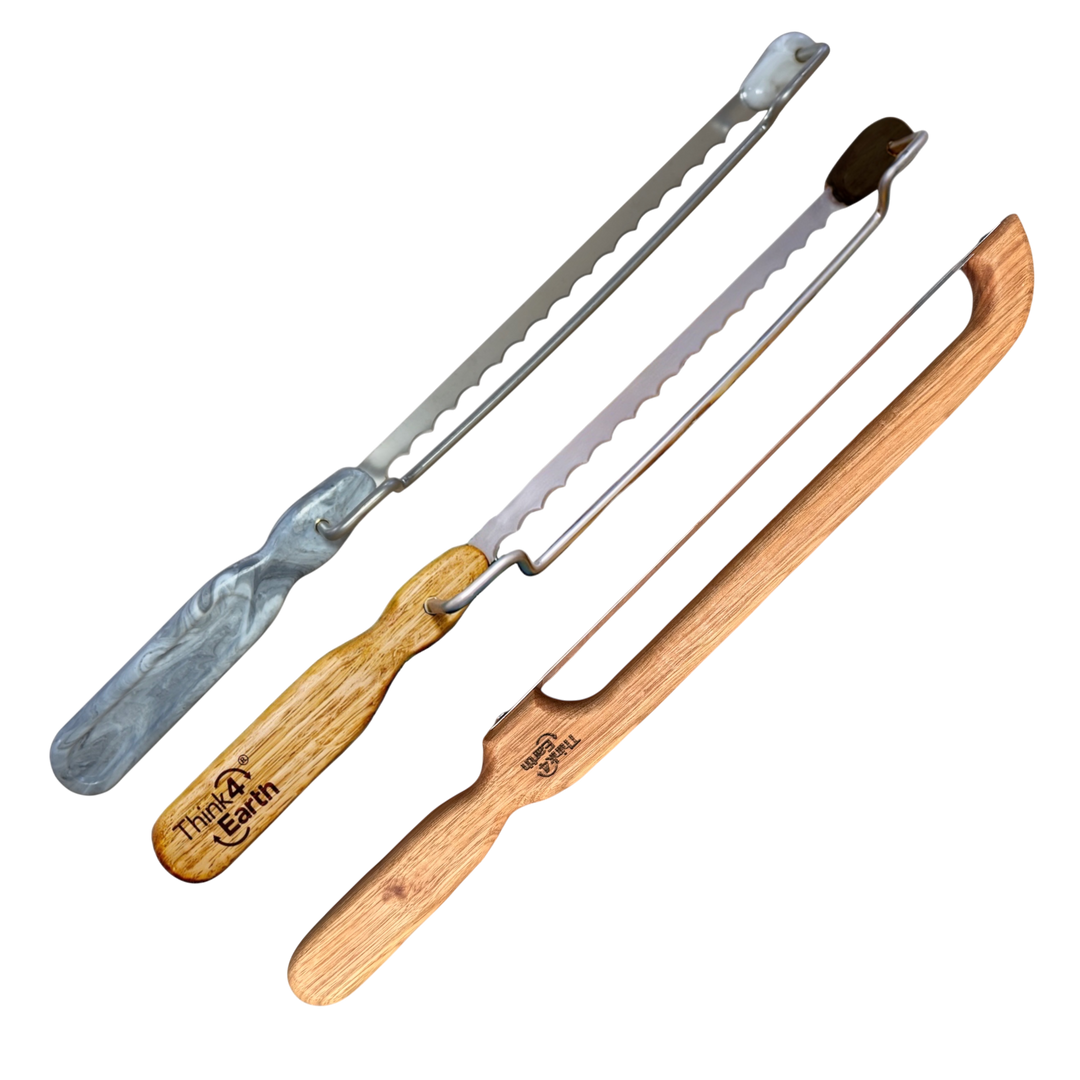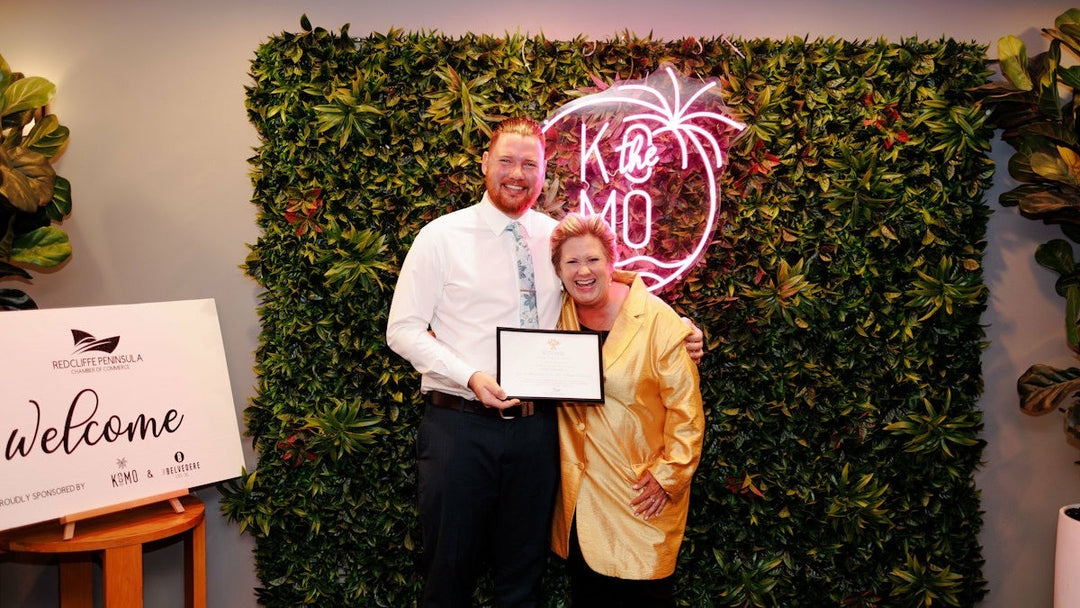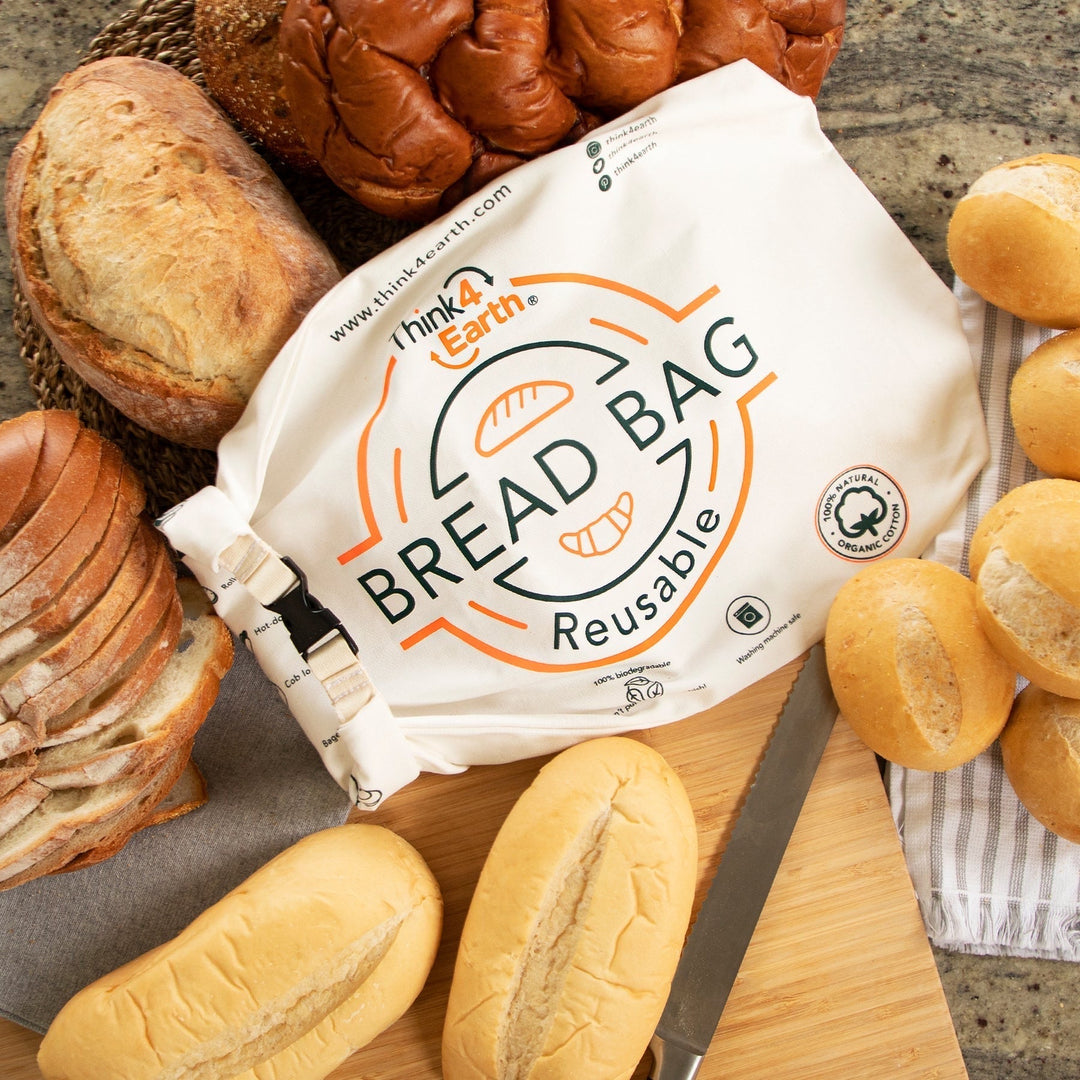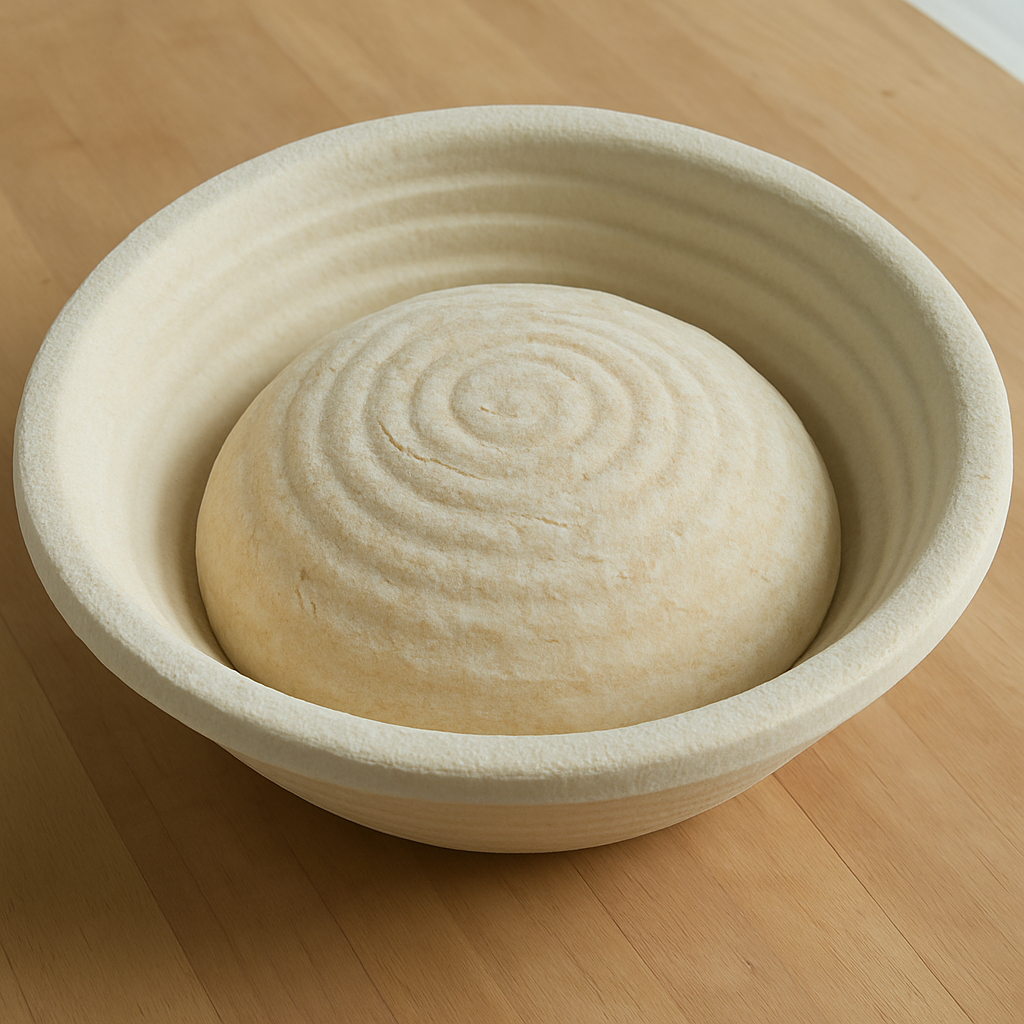How 12 Plastic Bottles Became a Bread Bag: Think4Earth’s Sustainable Mission
An Inside Look at Sustainable Innovation from Think4Earth
Discover how Think4Earth transforms 12 recycled plastic bottles into durable, freezer-safe bread bags. Ethically made, beautifully designed, and built to reduce plastic waste.
Introduction: Why the Way We Store Bread Needs to Change
Bread is one of the most consumed staples in the world, yet the way we store it often contradicts our efforts to live sustainably. Single-use plastic wraps, ziplock bags, and even waxed paper all contribute to landfill waste. While these may preserve freshness temporarily, they come at a cost to our environment.
At Think4Earth, we asked a simple question:
What if we could store bread better and cleaner using the very waste polluting our planet?
That question sparked a mission to rescue discarded plastic bottles and give them new life as something useful, beautiful, and eco-conscious. This is the story of how 12 plastic bottles became a reusable bread bag and why it matters.

The Plastic Problem We’re Facing
More than 1 million plastic bottles are sold globally every minute. Most are used once and discarded. Less than 30% are actually recycled.
The rest:
• Sit in landfills for centuries
• Break down into harmful microplastics
• Pollute oceans and waterways
This is not just a pollution problem it’s a systems problem that requires circular, innovative thinking.
What Is rPET and Why Does It Matter?
rPET (recycled polyethylene terephthalate) is plastic derived from used bottles that have been cleaned, melted, and respun into usable fibers.
Unlike virgin plastic, rPET:
• Requires less energy to produce
• Emits fewer greenhouse gases
• Diverts waste from oceans and landfills
At Think4Earth, we saw rPET not just as a material but as a medium for change.
The Lifecycle of a Think4Earth Bread Bag
Here’s how we transform 12 discarded plastic bottles into a freezer-safe, machine-washable, and stylish bread storage solution.
Step 1: Bottle Collection & Sorting
We collect only food-grade post-consumer PET bottles free from dyes and contaminants.
Step 2: Cleaning & Shredding
Labels are removed, bottles washed and shredded into clean plastic flakes.
Each bag uses flakes from around 12 bottles, saving them from landfill.
Step 3: Melting & Thread Spinning
Flakes are melted into resin and extruded into rPET yarn.
This process:
• Cuts carbon emissions by 79% (vs. virgin polyester)
• Uses 50% less water
• Creates breathable, durable fabric ideal for bread storage
Step 4: Weaving the Fabric
Our rPET yarn is tightly woven into lightweight fabric that’s:
• Freezer-safe
• Tear-resistant
• Flexible
Our fabric is engineered for both function and sustainability unlike plastic wrap, it won’t suffocate your bread or break down after a few uses.
Step 5: Ethical Manufacturing in a Women-Led Facility
We partner with a women-led facility in China where the bags are ethically sewn.
This partnership:
• Provides living wages
• Empowers women
• Maintains strict sustainability standards
Step 6: Design Meets Function
Each bread bag features:
• Roll & clip closure
• Machine washable & Freezer-safe (Dual Lining)
• Loaf-friendly shape
Easy to wash. Easy to use. Built to last.

Why 12 Bottles Make the Perfect Bread Bag
We tested different weights and fabrics 12 bottles was the sweet spot for a fabric that is:
• Thick enough to be durable
• Light enough to roll and seal
• Breathable enough to keep bread fresh
Every bag removes 12 bottles from waste streams a tangible impact in every kitchen.
Benefits Beyond the Kitchen
Owning a Think4Earth bread bag means you’re:
• Reducing single-use plastic
• Supporting circular product design
• Empowering ethical manufacturing
One customer shared:
“I bought a few of your bread bags and absolutely love them! Since then, I’ve also started replacing cling wrap and using loose produce bags all part of my journey to live more sustainably.”
Sustainability is contagious.
Reusability vs. Greenwashing
Many “eco-friendly” products still:
• Contain virgin plastic
• Aren’t designed to last
• Don’t disclose supply chains
At Think4Earth, we stand for:
✅ rPET, wood pulp, and organic cotton materials
✅ Transparent manufacturing
✅ Closed Loop thinking like using HDPE bottle tops for our bread boards and saws
How Our Customers Use Their Bread Bags
Think4Earth bread bags are used across homes, cafés, and zero-waste stores for:
• Freezing pre-sliced loaves
• Storing homemade sourdough
• Bakery runs (ditch the paper!)
• Packing lunchbox snacks
One customer even used it for croissants at a Paris market.
What’s Next? Expanding Circular Design
From bread bags to:
• HDPE bread saws and boards
• Timber care oils from Gilly’s
• Wood pulp proofing bowls (Germany)
We’re also testing:
• Beeswax-lined organic cotton bags
• New fabric blends for future zero-waste innovations
Conclusion: Small Changes, Big Impact
When you hold a Think4Earth bread bag, you’re holding:
• 12 saved bottles
• Ethical craftsmanship
• A better way forward
It’s not just about bread it’s about changing how we consume.
FAQ…
How long do bread bags last?
With proper care, our bags last for years. They’re designed to be washed and reused weekly.
Are bread bags freezer safe?
Yes! Our rPET fabric was developed to withstand freezer conditions while keeping your bread fresh.
Can I put warm bread in the bag?
Let your loaf cool first. Warm bread will release steam and create moisture inside any bag.
Ready to Join the Movement?
Shop the original 12-bottle bread bag
📸 Tag us in your baking moments on Instagram @Think4Earth
🛍 Visit us at your local market or event







